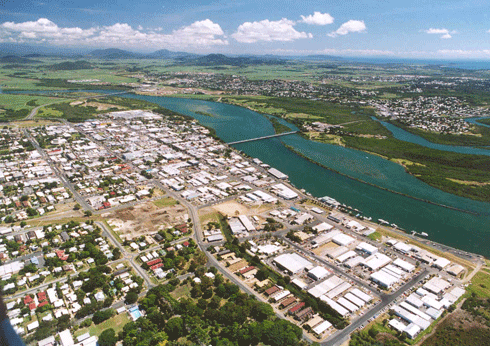
|
Published: 2 April 2013
Cane-waste saves energy, helps power a city
One of the country’s biggest sugar companies has opened a cogeneration facility that uses waste (bagasse) to produce enough electricity to meet one-third of the power needs of the regional city of Mackay, Queensland, as well as supply steam and electricity to its own mill and sugar refinery.

|
|
The cogeneration plant will supply one-third of Mackay’s power needs. Credit:
Mackay Regional Council
|
At the $120 million cogeneration plant’s recent opening, the Federal Parliamentary Secretary for Climate Change, Industry and Innovation, Yvette D’Ath, said: ‘Mackay Sugar has demonstrated that it is possible to make sensible investments in cleaner technologies.
‘[These] not only benefit the environment, but also improve the bottom line and productivity of businesses operating in the modern Australian economy.’
As an accredited renewable energy power station under the Renewable Energy Target (RET) scheme, the new cogeneration facility will create Large-scale Generation Certificates (LGCs) based on the amount of renewable electricity it produces.1
‘The revenue stream from the sale of these certificates will support the viability of new power generation projects,’ Ms D’Ath said.
Combined with a $9.1 million grant from the Federal Government's Clean Technology Food and Foundries Investment Program, the broader efficiency improvements being undertaken at Mackay Sugar will reduce the company’s overall carbon pollution by 71 per cent, lead to significant savings on energy costs, and help ensure a bright future for the local sugar industry.
The Clean Technology grant was awarded in August 2012 for the major upgrade of a boiler at Mackay Sugar’s Marian Mill and for the construction of bagasse handling facilities at the Racecourse Mill to improve the supply, transport and storage of surplus bagasse to fuel the newly constructed green-energy generator.
‘The bagasse-based cogeneration plant will reduce Mackay Sugar’s reliance on black coal and significantly reduce its energy costs. The facility also allows the company to earn money by selling renewable power to the grid,’ said Mrs D’Ath.
The Clean Technology Investment Programs, which are funded by carbon price revenue, are part of the Government's plan for a Clean Energy Future.
Source: Ministerial media release
1 LGCs are created in the online REC Registry by renewable energy power stations. One LGC is equivalent to 1 MWh (megawatt hour) of eligible renewable electricity generated above the power station's baseline. The certificates are made available to purchasers as offsets, effectively encouraging investment in renewable energy sources.



